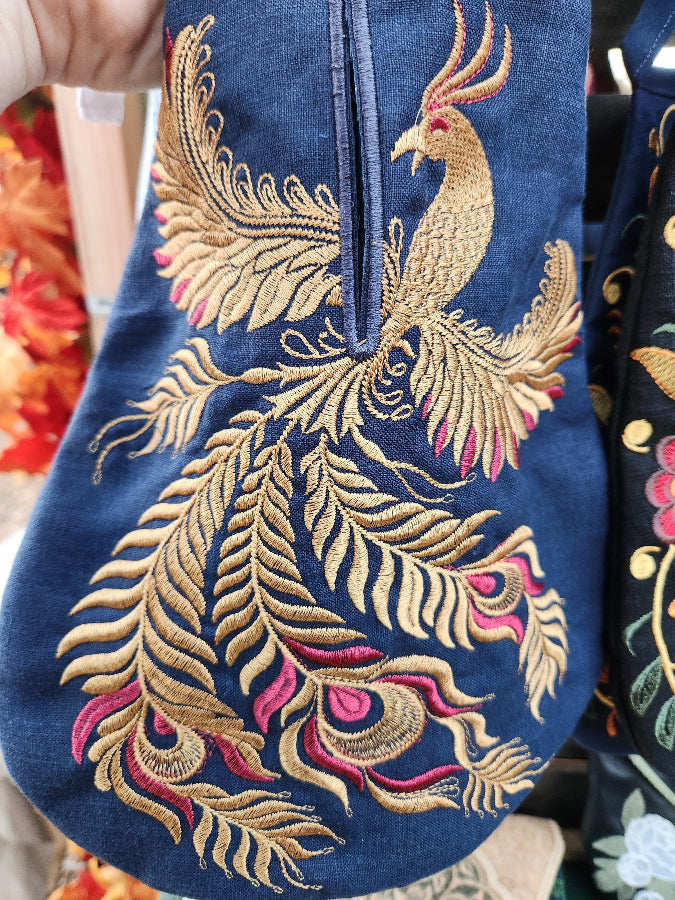18th Century Pocket - Phoenix
18th Century Pocket - Phoenix
Our pockets are made with organic linen and lined with cotton. They are machine embroidered and hand finished by Ashta, our Crone Raven. They are washable as well, just lay them out to dry.
Custom colors are available, just ask. Linen colors are limited to what Ashta can get, and price may vary based on custom color.
*The Phoenix or Firebird Pocket is from Slavic Folklore*
"Firebird (Russian: Жар-пти́ца) is a magical glowing bird from a faraway land, which is both a blessing and a bringer of doom to its captor. Some believe it can see the future. According to Slavic Folklore the Firebird is described as a large bird with majestic plumage that glows brightly emitting red, orange, and yellow light, like a bonfire that is just past the turbulent flame. The feathers do not cease glowing if removed, and one feather can light a large room if not concealed. In later iconography, the form of the Firebird is usually that of a smallish fire-colored peacock, complete with a crest on its head and tail feathers with glowing "eyes". "
What is a pocket? Here is a little history from the Folkwear website "Men and women in the 13th century carried items in small pouches made of leather or cloth that were tied to their waists by rope. These pouches hung innocently on their outer clothing for the world to see. As societies grew and became more urban-like, crime swiftly followed. Hence, the pouch and its contents were hidden from view. Men wore their pouches tied to the body under their jackets and tunics. Women wore their pouches tied at their waists under their skirts. Slits were cut in clothing to make for easy access to the pouch. This prevented having to disrobe, which in a sense made men and women equal pouch wise. This method of wearing pouches continued for several more centuries.
*The designs are researched and created by a Canadian artist by the name of Liuba. Most designs are period appropriate, for 18th Century Costumes*
Nie można załadować gotowości do odbioru
Share
Materials
Materials
Dimensions
Dimensions
Care information
Care information




